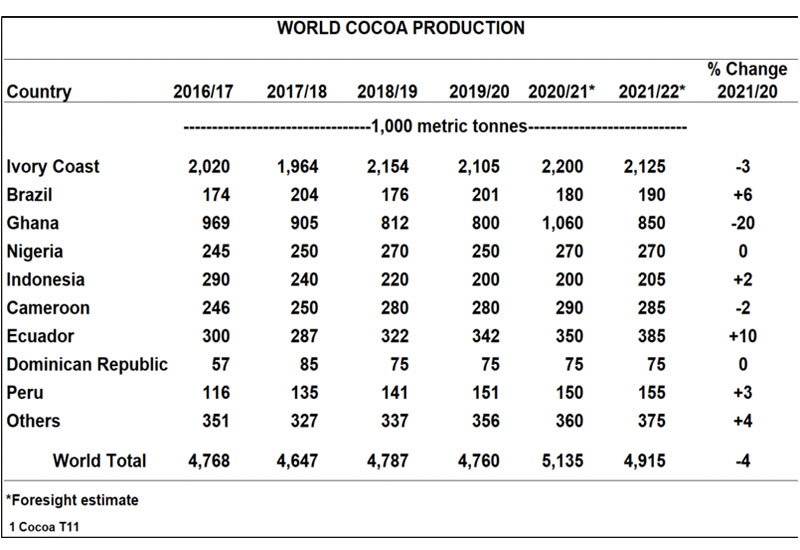There are two main variables expected to affect global cocoa supply and demand in 2022: climate and epidemics.
Cocoa supply variables: weather changes in producing countries; cocoa demand variables: global outbreak progress.
1. Climate
Cocoa trees thrive only in certain climatic conditions, including fairly uniform temperatures, high humidity, plenty of rain, and nitrogen-rich soil. Therefore, climate change is a serious challenge for countries like Côte d’Ivoire and Ghana, whose economies depend on agriculture.
Climate change will lead to higher temperatures, changes in precipitation patterns, changes in extreme weather conditions, and reduced availability of water, all of which will reduce agricultural productivity.
Cocoa farms are extremely vulnerable to high temperatures due to excessive deforestation and reduced forest cover. Lack of rain can also affect cocoa production. Excessive dry periods and insufficient rainfall can affect cocoa pollinators and ultimately lead to lower yields.
Decades ago, the weather was not a concern, but now things have changed. Most of the cacao trees are bearing fruit, but the lack of rain means that the pods are only dropped prematurely.
However, excessive rainfall is also a disadvantage. Excessive rainfall can lead to insect and fungal infections during cocoa growth. If the heavy rainfall pattern continues for weeks or months, there will be a tendency for black pod to break out. Cocoa black pod disease is one of the main diseases affecting cocoa production, which in turn affects cocoa supply.
The global cocoa production data for the past 10 years is shown in the table below. Among them, Ghana saw a decline in cocoa production in 2018/19 and 2019/20, due to the impact of weather.

2. Epidemic
The World Health Organization (WHO) has announced the Omicron variant of the coronavirus reported in South Africa on November 24, noting that the probability of further global spread of the virus is “very high” because it has many mutations. Although “no deaths related to Omicron have been reported”, WHO fears “serious consequences” in some parts of the world. Despite uncertainty about its transmissibility, preliminary data suggest that this variant “increases the risk of reinfection.”
55% of the world’s population has received at least one dose of the COVID-19 vaccine. 8.18 billion doses of the vaccine have been used globally, with 34.86 million doses currently being used daily. Only 6.2% of people in low-income countries received at least one dose of the vaccine. Only 0.6% of vaccines are vaccinated in developing countries in Africa.
Some countries are tightening travel and entry restrictions after the WHO warned on Monday of the risk of a surge in infections globally, Reuters reported. Japan said on Monday it would close its borders to foreigners from midnight to prevent the Omicron variant from spreading there. Israel on Saturday became the first country to completely close its borders in response to Omicron. The U.S. Centers for Disease Control and Prevention (CDC) and the State Department on Saturday advised against travel to eight southern African countries.
Several countries have seen an increase in the number of coronavirus cases over the past month. More cases could slow the economic recovery in those countries and weigh on cocoa futures prices in the coming months.
